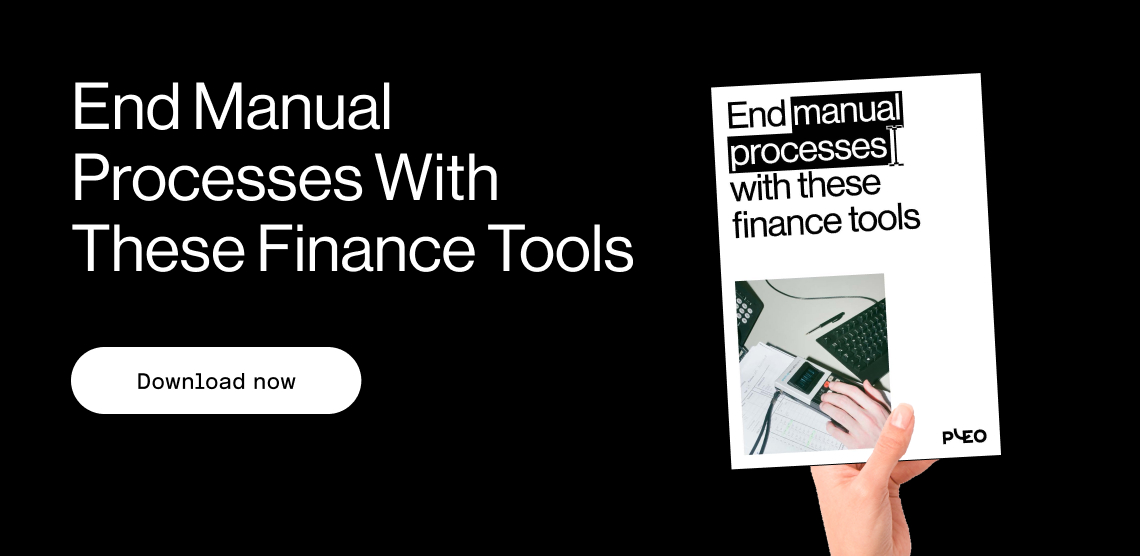5 steps to accelerate decision-making in your finance team


Companies have learned a lot about agility in recent times.
On more than one occasion, you've probably found your company rethinking its entire workflow — whether that was implementing remote work, running cashflow scenarios or even pivoting your whole business model .
And finance teams have played a critical role in informing and implementing so many of those decisions.
Finance teams are evolving
We’ll probably talk about “finance teams” in this piece, but as you surely know, sometimes that “team” can be one sole CFO or Finance Director. Maybe for your team, it involves an external accountant.
The traditional view of the finance department sees their main responsibilities as being payroll, managing pesky receipts and invoices, and let's not forget, creating long management reports on last quarter's performance.
Thanks in no small part to technology, that role was already evolving before the pandemic kicked it into overdrive.
Today’s finance team can and should be at the heart of the company, helping leaders to make the best possible decisions.
But to help drive an agile business, you’ve got to be agile yourself. And here are 5 ways to do that.

Embrace cloud accounting
Modern accounting automation systems are the hub for a finance team. The opportunity to leave manual data entry or complex report building to automated tools just has to be seized.
Systems like Xero connect to virtually every element of a business, pulling and pushing information in order to deliver real-time analytics.
Some teams have yet to discover the difference cloud accounting can make for them. But this is the perfect time to start that process. In fact, the UK government is launching a £520m fund to support SMEs in adopting new digital tools, after identifying these solutions as one of the key ways to help businesses recover.
And if you’re only using the most essential parts of these systems, seize the moment and look to see what else they can do for you .

Rethink the way you manage invoices with Pleo Invoices
Once you’ve established the hub, it's time to plug in some world-class tools to get your financial processes shipshape.
Invoice management is often the first one to tackle. In our recent study, we found that it accounts for over 50% of spend within most businesses — nothing affects the bottom line more.
But accounts payable can be a slow and laborious process for everyone involved. Small businesses see precious time lost to correcting invoice errors, while growing companies are held back by the needless red tape and lack of overview.
A tool like Pleo Invoi ces gives finance teams a whole new level of visibility, from the moment you receive the invoice to payment. Each document can be traced, approved and paid in one hub — read our fu ll explainer on Pleo Invoice s here.
This doesn’t just mean you’re keeping the company agile, it frees up your team to develop / offer the kind of strategic insights that add real value.

Plug the rest of your business in
The small business software community is absolutely thriving and delivering real innovation.
So if you’ve run out of patience with gargantuan spreadsheets and outdated tech, look at what options are available to you. Chances are, you’ll find plenty.
You can plug everything from your stock levels to your time management software into cloud accounting now.
Not sure where to start? That’s OK — just figure out what problems are holding you back and one quick Google search later, you’ll have a shortlist of possible solutions.
Modern tech sales teams know the value of a good demo, so they’ll be happy to answer any questions you have that are specific to your business.
By the way, we’ve pulled together a new eBook that details some of the top tools on the market and identifies the pain points they can tackle for you.
Build data into the core of the business
Getting all this data is important (and fun!), but too much information can quickly feel overwhelming.
Rethinking the way you make decisions also means thinking about exactly what the goals of the business are and understanding which KPIs will affect those goals.
Flinder , information management experts , advise that “it’s not about adding reports — it’s about rationalising, consolidating and seeing what is most relevant to streamline reporting.”
To really understand management information and the opportunities, we recommend having a good look at Flinder’s 50 Ways To Improve Your Management Information eBook .
Change the culture around what a finance team delivers
Yes, the main part of building an agile finance team is getting to grips with the tools that empower your people to do their best work.
But it’s important to let the rest of the company know the value you’re delivering too.

No finance team should be thought of as “paper chasers” anymore. Today's professionals are a quantum leap away from that.
Take some of our hospitality customers here at Pleo. Their CFOs are asking questions like: Is our restaurant profitable if we can only open 10 tables? Or is takeaway proving so popular that we should consider expanding that offering? That’s a long way from querying expense reports and sorting through piles of receipts.
The final stage of improving your decision-making process is bringing more people in on the recommendations you’re making. Let people across the business see the value you add and before long, you’ll probably be helping to guide even more areas of business strategy.
That brings pressure, of course, but we’re guessing you’ll find it a lot more rewarding than data entry.
